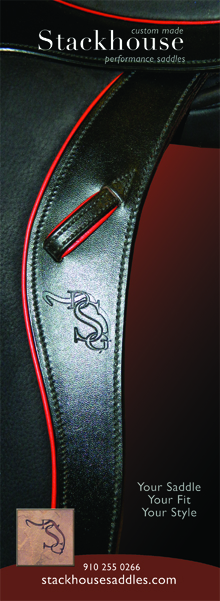Search the Site
Guest Blog Post # 41: "Put De Posit Here, Not Dere" by Bill Woods
Put De Posit Here, Not Dere
Bill Steinkraus was a show jumping icon of the 1960s and winner of the individual gold medal in that discipline on Snowbound at the 1968 Mexico City Olympics.
At a clinic I attended years ago, he was speaking of schooling a hot horse that wanted to rush its fences, but his metaphor has many applications in dressage training as well. He likened the many circles away from the jump on the approach and halts on the line in front of the fence as like putting deposits in a savings account. Enough deposits made in advance and a withdrawal when you actually jump the fence won't "bankrupt" you.
This same line of reasoning fits into numerous dressage situations. Too much actual practicing of the desired finished product is likely to draw down your account with your horse and leave him out-guessing you, anticipating the movement, or inventing his own agenda.
I once watched Isabel Werth on Gigolo in the schooling arena at Aachen on the day before the Grand Prix. This, remember, was her veteran Olympic horse. She was working on her two-tempis, not by practicing endless lines of them, but by riding the diagonal to halt. Then a depart and a pair of twos and another halt—all the time making him wait for her aids and not rushing against the hand. I saw her work these soothing exercises for ten minutes without ever once riding the whole line of nine twos which she'd do in competition the next day.
There are two ways to think of schooling, and they are not mutually exclusive. One way you might think of as cumulative. It's a relatively linear approach. Do A, add B. When you have A and B, add C. This is valid in that it acknowledges the progressive development of the exercises through the levels. But another way to school you might think of as integrative, that is, you break down the concepts a horse needs to master in order to accomplish a given exercise into their constituent elements. In the case of the tempis, make him quick enough off the seat and leg with one set of exercises. Make him hold himself up in self carriage with another set. Make him wait for the aids and not rush off with a third set. Then eventually assemble them into a coherent package with the greatest likelihood that every part will work as it should.
You can create similar scenarios for everything from canter departs to leg yielding to turns on the haunches, adjusting the repetitions of various elements depending on what your horse brings to the table on a given day. Sharpening your horse to the leg without “bashing” him in the actual movement; reinforcing the half halt without setting him up harshly during the exercise you’re trying to end up with keeps him from fretting about your long term intentions and lets him stay mentally calm, yet alert, when it really counts.







0 Comments Posted Leave a comment